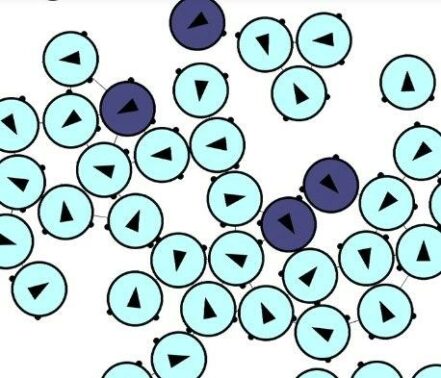Major PhD Procrastination by Toplap

Collective in residence Toplap carries out the simulation “Major PhD Procrastination”. Developed by Julia Múgica Gallart, with the help of Iván Paz, the video links to Julia’s PhD research which focuses on the study of collective behavior and decision making processes in animals, from an statistical physics perspective. To try and understand collectiveness more deeply, they have been working with these amazing small robots called “kilobots”, implementing simple individual rules of interaction from which complex collective behaviors could emerge. Since it’s not possible to work with the real ones right now, they were able to use a kilobot simulator that basically imitates its way of moving and communicating with each other. If anyone wants to know more about kilobots, this is where to start.
DISCLAIMER: This simulation has no intention to represent real epidemic processes happening in any country or community. Its whole purpose is to give us a visual tool to remember two things:
1. The infected cases we count today, are a product of what happened around two weeks ago.
2. The infected cases we know about (the symptomatic ones) are a very small percentage of the total infected cases (the ones in incubation period, the asymptomatic ones or the ones that have not been tested for COVID-19).
Kilobots are programmed in C programming language, and the simulator I used specifically for kilobots is called Kilombo (https://github.com/JIC-CSB/kilombo).
Model description
Population size = 500 robots.
The simulation starts with everybody healthy (cyan) except one, our patient 0 (dark blue). For around two roboweeks, she is in the incubation period, doesn’t know she has the virus and she starts infecting other robots with a probability of 0.2. After two weeks she starts showing symptoms (light blue) and stops moving (but she’s still contagious though, with a probability of 0.3). By then, the virus is spreading exponentially and more robots are showing symptoms. Nevertheless, around 80% of the infected robots never show any symptoms, they go around infecting other robots (remember, dark blue with probability of 0.2 of infecting others). After another two-roboweek period, they recover and become immune to the virus (pink). Symptomatic robots will either recover (around 97% of the infected population) or will die (around 3% of the infected population; yellow).
Categories: Activities of the residents |
